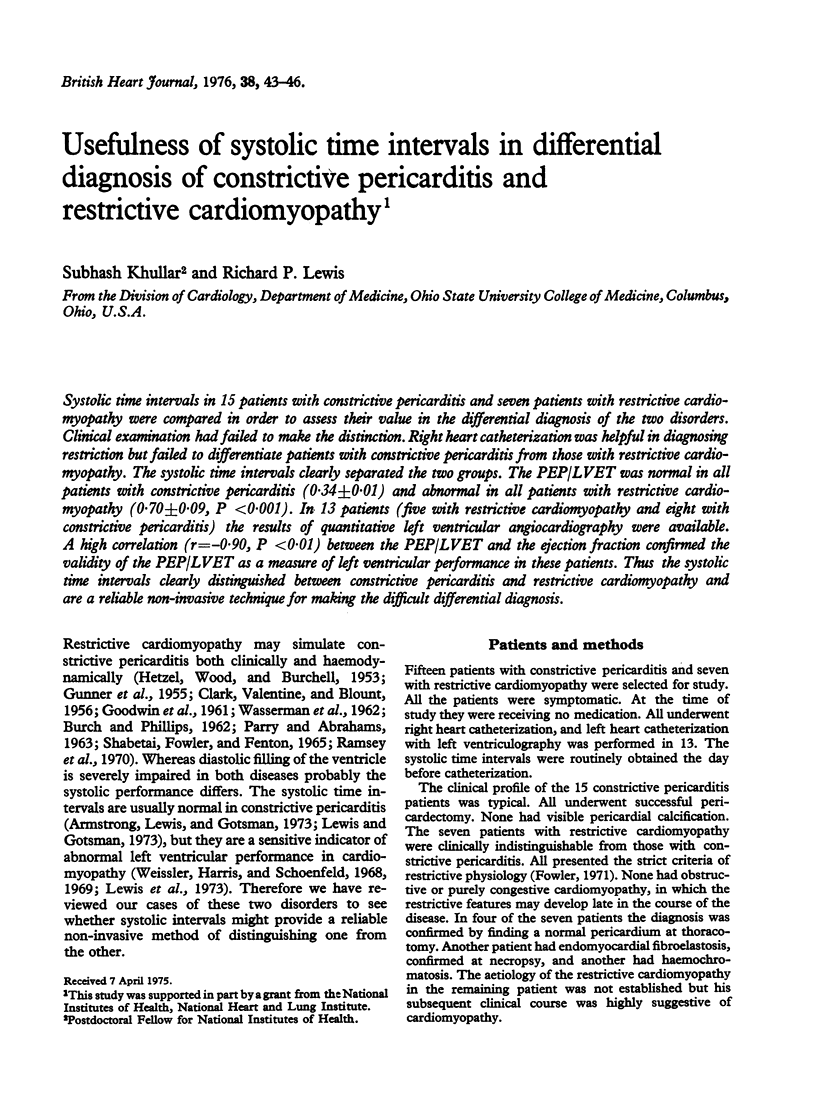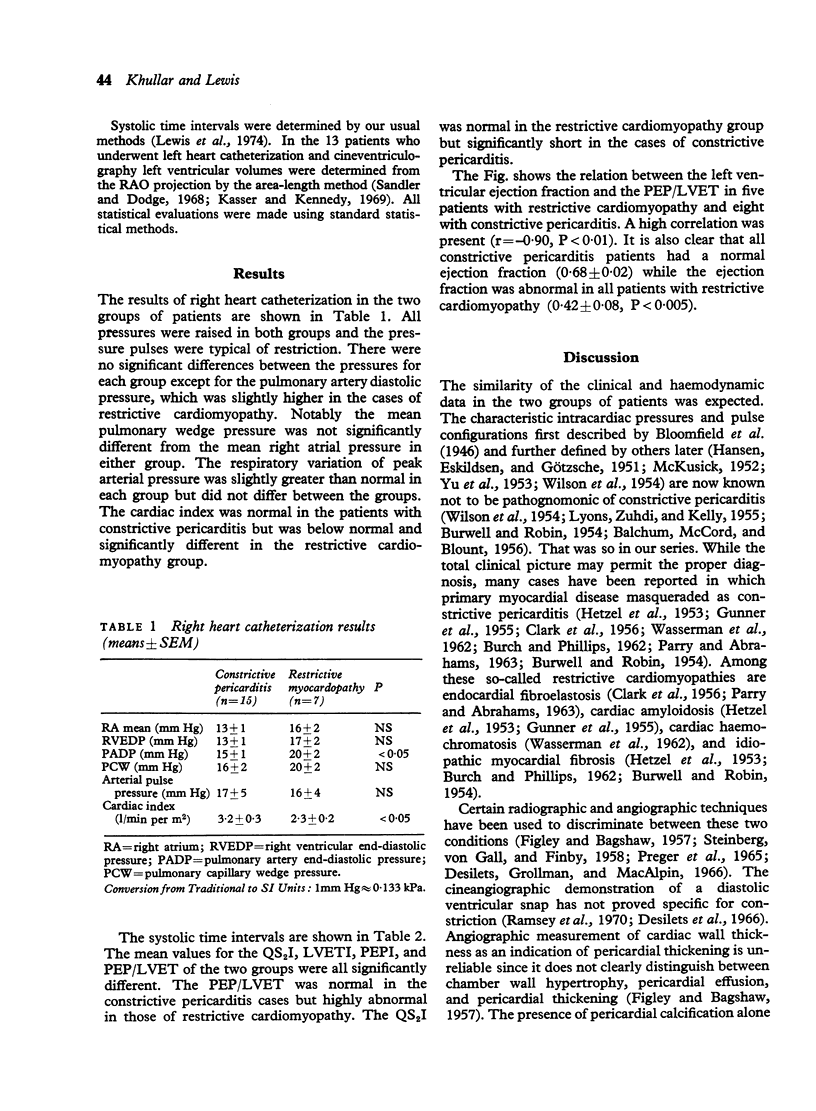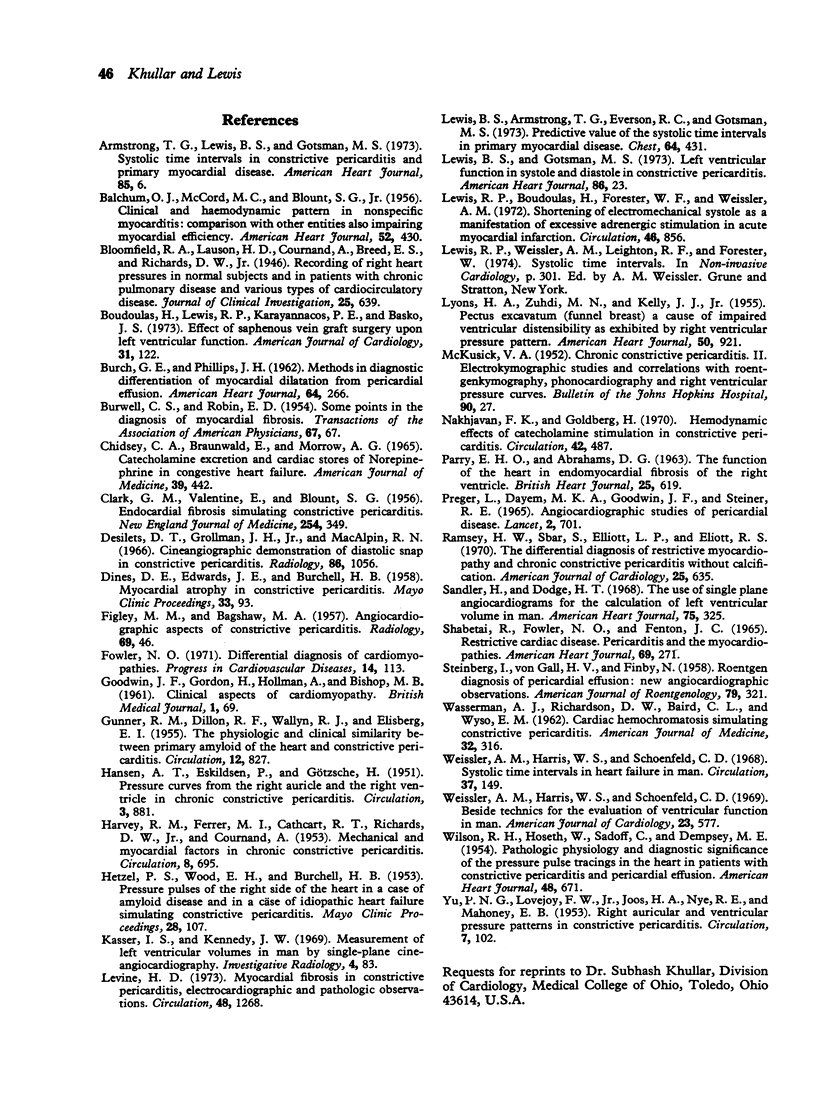Abstract
Systolic time intervals in 15 patients with constrictive pericarditis and seven patients with restrictive cardiomyopathy were compared in order to assess their value in the differential diagnosis of the two disorders. Clinical examination had failed to make the distinction. Right heart catheterization was helpful in diagnosing restriction but failed to differentiate patients with constrictive pericarditis from those with restrictive cardiomyopathy. The systolic time intervals clearly separated the two groups. The PEP/LVET was normal in all patients with constrictive pericarditis (0.34 +/- 0.01) and abnormal in all patients with restrictive cardiomyopathy (0.70 +/- 0.09, P less than 0.001). In 13 patients (five with restrictive cardiomyopathy and eight with constrictive pericarditis) the results of quantitative left ventricular angiocardiography were available. A high correlation (r=-0.90, P less than 0.01) between the PEP/LVET and the ejection fraction confirmed the validity of the PEP/LVET as a measure of left ventricular performance in these patients. Thus the systolic time intervals clearly distinguished between constrictive pericarditis and restrictive cardiomyopathy and are a reliable non-invasive technique for making the difficult differential diagnosis.
Full text
PDF





